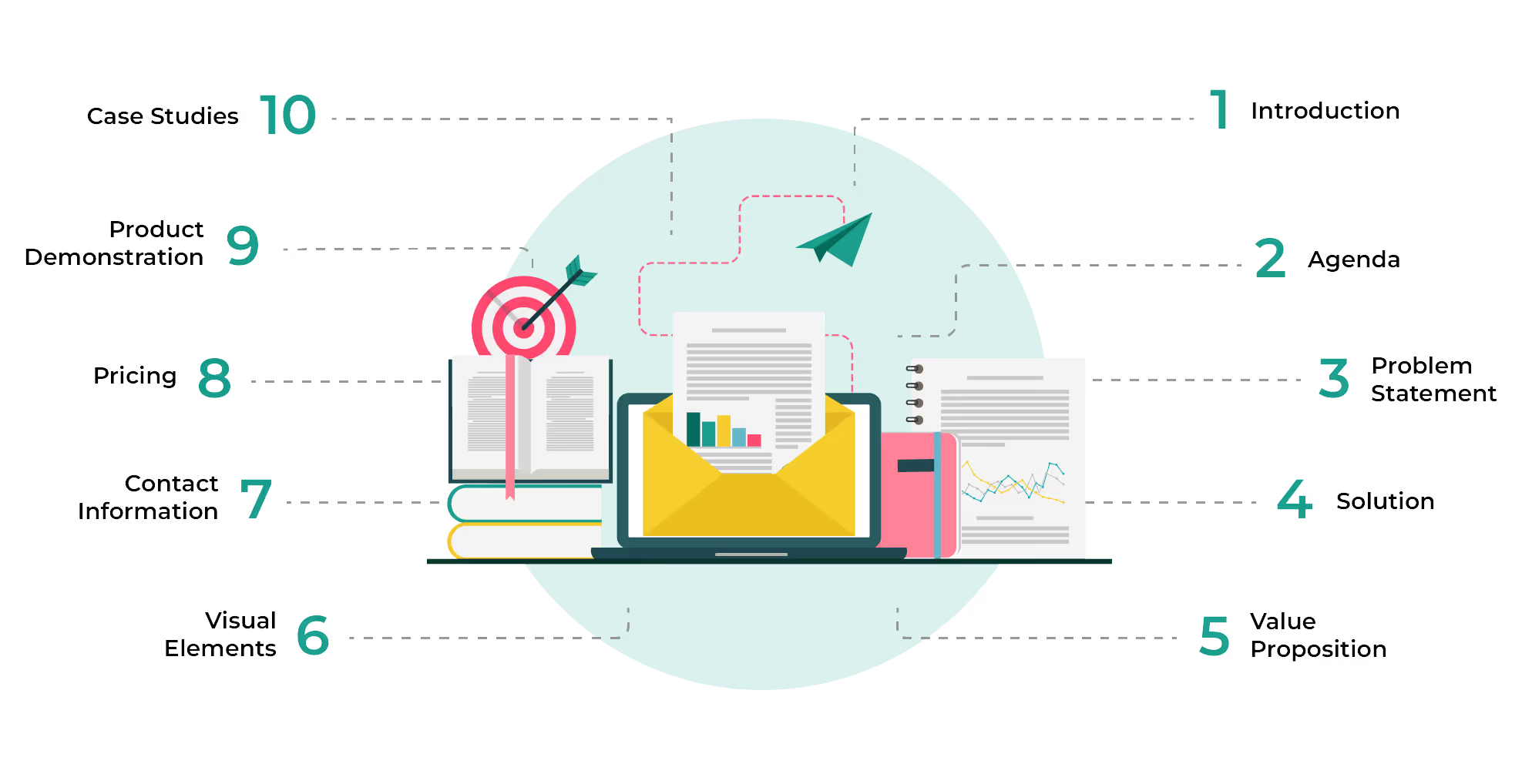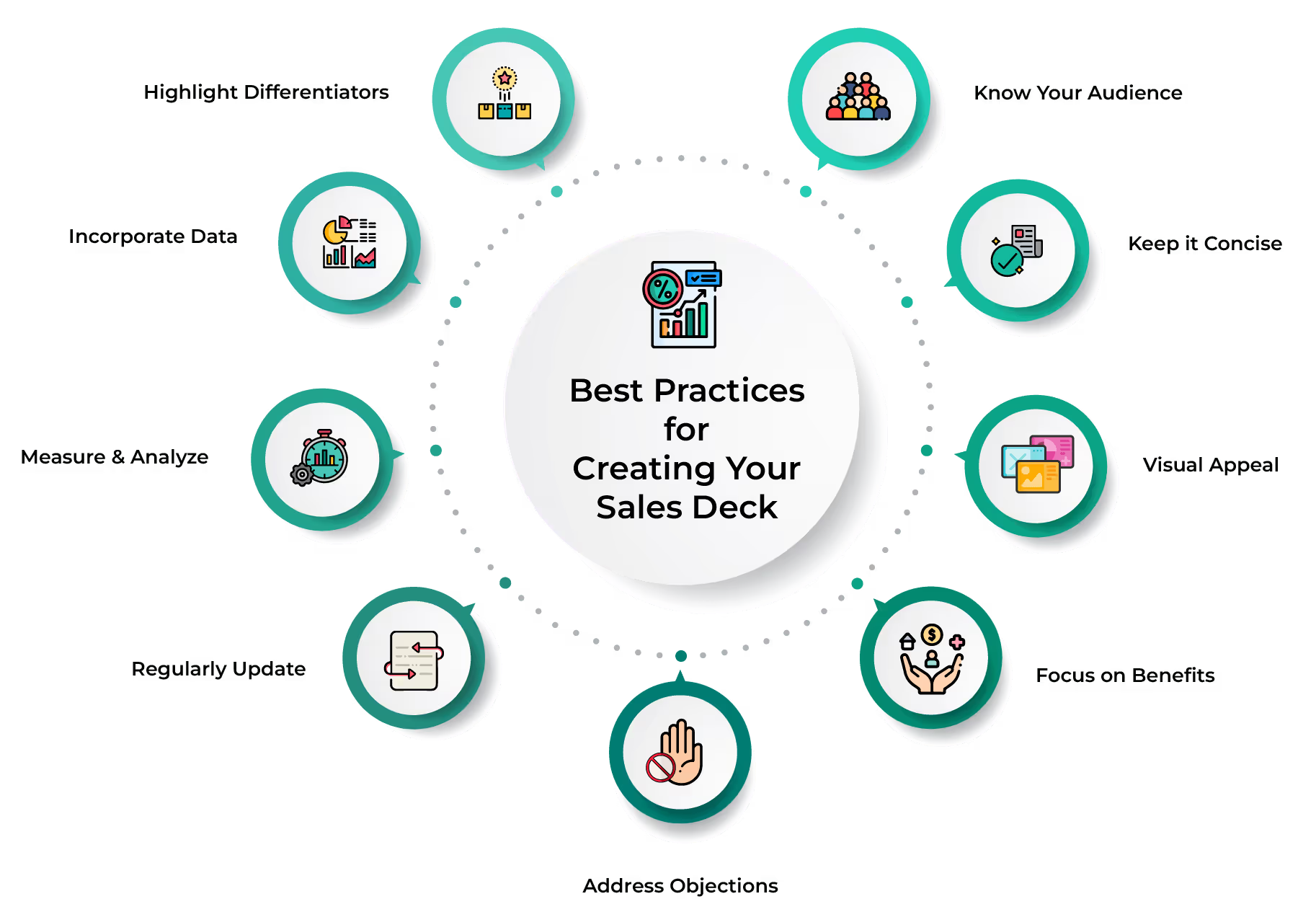
Blog
What You Need to Know About Sales Decks: Elevate Your Presentations?
December 7, 2023


Key Insights
There is no question of being authentic in your sales presentation.
But how do you bring that convincing factor without being too evident?
Sales reps have many strategic arrows in their quiver to face the challenges in the sales process. But to capture the attention of your prospect and convince them of a sale is the most challenging of them all. Introducing a sales performance incentive fund can serve as a powerful motivator, aligning the efforts of your sales team with organizational goals and driving enhanced performance.
So here is a perfect solution that will help you overcome these hurdles with ease.
In this blog, we will walk you through the sales deck, why should a sales team include a sales deck in their sales process, and best practices for creating a sales deck structure.
So scroll down for more.
What is a sales deck?
A sales deck is a set of slides created to support and enhance the sales pitch or conversation between a salesperson and potential clients. It includes information about the company's value proposition, products or services, features and benefits, market positioning, success stories, pricing, and other relevant details.
It is a visual tool that effectively communicates key information through a combination of text, images, graphics, and sometimes multimedia elements to create an engaging and informative presentation and hiring a freelance illustrator definitely helps. In addition, commission-based sales reps can leverage this tool to enhance their pitch and showcase compelling data, ultimately driving sales and boosting their earnings.
What should a sales deck include?

A well-structured sales deck should include key information that effectively communicates your value proposition and addresses the needs and interests of your target audience. Additionally, incorporating compelling sales incentives examples can further captivate your audience, demonstrating the tangible benefits and rewards they can gain through your product or service.
Here are some essential elements to include in a sales deck example:
- First, it should give a brief introduction about the company, its mission, and core values, products, or services. This gives an overall idea about the organization and the industry it caters to.
- The sales deck must be clear about the agenda and must outline the topics and areas that the presentation will cover.
- The sales deck template must create a connection with the target audience by highlighting the common challenges they face, helping them relate to the issue, and emphasizing its significance.
- When the sales deck points out challenges, it must surely resolve these identified problems. Highlighting your product, its features, and benefits to address the challenges the audience faces will make a mark on them.
- With various competitors in the market, it must be mentioned in the sales deck how your product is different from the rest and the unique value that you add to the client’s operations.
- The best way to convince and persuade your customers is by sharing case studies, success stories, and testimonials of clients who benefited out of your product or service.
- A crucial part of the sales deck is the product demonstration. It must include visual images and representations to showcase the key functionalities and enhance the understanding of the prospect.
- The sales deck must clearly define the pricing structure and explain how this investment will have added value to their operations.
- Always provide your contact details like relevant email IDs, website links, and social media handles so that prospects can reach out for further inquiries.
- Sales deck is used to enhance the understandability of your target audience. Hence use of visual elements like images, infographics, graphs, and other visually appealing presentations must be incorporated while designing the sales deck template.
Always remember to close the sales deck by summarizing the key points like reiterating the value proposition, highlighting the key differentiators from the competitors, and showcasing your solution as superior in addressing the challenges that the prospects face.
For further reading, check When to Utilize Sales Battlecards: Key Moments for Maximizing Sales Impact?
Best practices for creating your sales deck

Creating an effective sales deck involves a combination of strategic thinking, clear communication, and engaging visuals. Additionally, incorporating well-crafted sales rebuttals is essential to anticipate and address potential objections, ensuring that your presentation remains persuasive and addresses any concerns your audience may have.
So let's explore the best practices for creating your sales deck:
- Know Your Audience
Understand who your target audience is, their potential needs, and the challenges they face. Having this framework of an idea helps in tailoring your messages that are personalized, resonate with their requirements, and address their concerns.
- Keep it Concise
The content of your sales deck must have a clear and concise presentation. Focusing on the critical points and avoiding information overload helps in capturing the attention and interest of your audience.
- Visual Appeal
Sales deck structuring must ensure easy readability and understanding for the audience. Using visually appealing images, graphics and designs will help gain their attention. Breaking down the text into headings, subheadings and bullet points guides the reader through their reading.
- Focus on Benefits
Sales deck template must highlight and communicate the benefits of your product or service. It must emphasize how the solution addresses the audience's challenges and problems and help improve their operations.

- Address Objections
Objections and rejections are sure to come your way during the sales pitch. Anticipating these potential objections and addressing them proactively in your presentation through case studies or testimonials will provide evidence of success and influence them to make a positive decision.
- Highlight Differentiators
Sales deck must highlight the competitive advantage your solution provides to the client when compared to the competitors. It must be clearly articulated, through careful consideration of various types of sales positioning, what makes your product and features unique and superior to the competitors in the market.
- Incorporate Data
Any point you mention in the sales deck must be backed by data. Supporting your points with relevant statistics will have an impact on the decision-making process. But care must be taken not to overload your sales deck with too many numbers which will make the deck look dull.
- Measure and Analyze
Tracking the effectiveness of the sales deck is a crucial part of concluding the cycle. Monitoring and tracking its impact in influencing and improving sales through analytics and feedback will provide insights to refine it for future presentations.
- Regularly Update
Any tool, technique, or strategy you build is not a one-time process. It requires regular review and refinement to ensure that it reflects the changes in your product and the market.
Incorporating these best practices helps create a sales deck structure that effectively communicates your message, engages your audience, and increases the likelihood of a successful sales outcome.
For further reading, check What Is a Sales Process Flowchart? A Comprehensive Guide.
Conclusion
The structure and content of a sales deck vary based on the industry, target audience, and specific goals of the sales presentation. However, irrespective of these differences, a well-crafted sales deck plays a crucial role in helping a salesperson make a persuasive case and close deals.
The key is to customize the sales deck for your target audience and modify the content according to their requirements and interests. Keeping the presentation concise, engaging, and focused on the benefits for the audience is crucial for its effectiveness.
Keeping an eye on these minute details will help in creating an effective and engaging sales deck that can gain the attention and interest to be eventually converted into potential sales.
For more sales-related reading, connect with Kennect. For more information, Book A Demo Now!
ReKennect : Stay ahead of the curve!
Subscribe to our bi-weekly newsletter packed with latest trends and insights on incentives.
Thank you! Your submission has been received!
Oops! Something went wrong while submitting the form.
Your data is in safe hands. Check out our Privacy policy for more info





.avif)
.avif)








